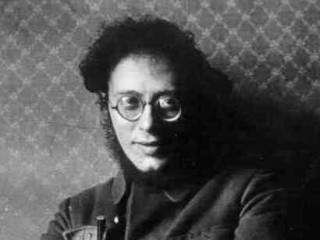
Karl Bernardovich Radek biography
Date of birth : 1885-10-31
Date of death : 1939-05-19
Birthplace : Lemberg, Austria-Hungary
Nationality : Austrian
Category : Politics
Last modified : 2011-10-10
Credited as : Politician, Communist leader,
Karl Radek was born Karl Sobelsohn in Lvov (then in Austrian Poland) to an Austrophile Jewish family. As a youth, he rejected his family's outlook and became involved in political agitation, moving to Switzerland in 1904. There he joined the left wing of Polish socialism, returning to Poland in 1905 to participate in revolutionary activity in Warsaw. After a brief prison term, Radek spent the next decade building his reputation, in both Poland and Germany, as a talented but volatile and often irresponsible journalist. His barbed comments so irritated leading Socialists that he was successively expelled from the Polish and German Socialist parties.
During World War I Radek returned to Switzerland, where he alternately collaborated with and contended with V. I. Lenin in the Zimmerwald Movement, an organization of antiwar Socialists. After the overthrow of the Czar in March 1917, Radek accompanied Lenin in the "sealed train" across Germany, but he was not allowed to enter Russia. He then spent several months in Stockholm organizing Bolshevik support among European Socialists, and after the Bolshevik coup in November 1917 he proceeded to Moscow. There he became responsible for foreign-language propaganda, accompanying Leon Trotsky to Brest Litovsk, where he propagandized German troops. At the end of 1918, after the collapse of the imperial regime in Germany, Radek returned to Berlin in order to help organize the German Communist party. Though he counseled against a German uprising, the "Spartacus" Putsch of January 1919 led to his incarceration for almost a year.
Upon his return to Moscow, Radek was assigned major roles in the Communist International (Comintern), where he enjoyed great influence, particularly in the German Communist party. His multilingual talents, his bizarre personal appearance—some of his contemporaries likened him to an ape—and his extraordinary sense of humor made him a great favorite of journalists in Moscow. From 1919 to 1923 Radek enjoyed considerable prominence both within and without Russia.
However, his political enemy Grigori Zinoviev used the collapse of the German revolution of 1923 to exclude Radek from the Comintern and high party posts. Under the influence of his new mistress, Larissa Reissner, Radek withdrew from party politics, and in 1925 he became rector of Sun Yat-sen University in Moscow. When Larissa died in 1926, Radek openly joined the Trotskyite opposition, with which he had long been identified; in 1927 he was expelled from the Bolshevik party and subsequently exiled to Siberia. In 1929 Radek renounced Trotsky and returned to Moscow to become once again a major publicist—for Stalin—although he never recovered his Comintern or party posts.
In 1936 Radek was one of the coauthors of the new Soviet constitution. However, later that year he was arrested for treason, and in a show trial in January 1937 Radek was sentenced to 10 years' imprisonment. Though rumors of his survival persisted, Radek apparently died in prison sometime in 1939.
The only biography of Radek is Warren Lerner, Karl Radek: The Last Internationalist (1970).
Tuck, Jim, Engine of mischief: an analytical biography of Karl Radek, New York: Greenwood Press, 1988.
















